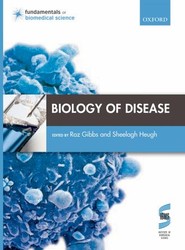(To see other currencies, click on price)
MORE ABOUT THIS BOOK
Main description:
Biomedical scientists are the foundation of modern healthcare, from cancer screening to diagnosing HIV, from blood transfusion for surgery to food poisoning and infection control. Without biomedical scientists, the diagnosis of disease, the evaluation of the effectiveness of treatment, and research into the causes and cures of disease would not be possible.
The Fundamentals of Biomedical Science series is written to reflect the challenges of practicing biomedical science today. It draws together essential basic science with insights into laboratory practice to show how an understanding of the biology of disease is coupled to the analytical approaches that lead to diagnosis.
Assuming only a minimum of prior knowledge, the series reviews the full range of disciplines to which a Biomedical Scientist may be exposed - from microbiology to cytopathology to transfusion science. Alongside volumes exploring specific biomedical themes and related laboratory diagnosis, an overarching Biomedical Science Practice volume gives a grounding in the professional and experimental skills with which any Biomedical Scientist must be equipped.
The series
· Understands the complex roles of Biomedical Scientists in the modern practice of medicine
· Understands the development needs of employers and the Profession
· Addresses the need for understanding of a range of fundamental sciences in the context of Biomedicine
· Places the theoretical aspects of Biomedical Science in their practical context
The series is developed in partnership with and endorsed by the Institute of Biomedical Science. See ibms.org for more information.
Histopathology describes the processes and practices that are central to the role of the histopathology biomedical scientist, from pre-sampling to diagnosis to laboratory management.
An understanding of the physiology of cells and tissue is vital to the successful identification of clinical conditions and, as such, this book begins by laying out the key features of both and their significance for diagnosis. But histopathology relies heavily on optical technology, and microscopy is covered in detail from fixation, through staining to light and electron imaging methods.
A complete course on the concepts and skills needed for a biomedical scientist to work within a functioning histopathology laboratory.
Online Resource Centre
The Online Resource Centre to accompany Histopathology features:
For registered adopters of the book:
· Figures from the book, available to download
For students:
· An interactive Digital Microscope, encouraging the exploration of tissue samples
· Self-assessment modules to help you to check and reinforce understanding of the basic science introduced in each volume
· Video podcasts including interviews with practicing biomedical scientists, and 'in the lab' footage showing biomedical science in practice
PRODUCT DETAILS
Publisher: Oxford University Press (OUP Oxford)
Publication date: September, 2011
Pages: 416
Weight: 891g
Availability: Not available (reason unspecified)
Subcategories: Anatomy, General Issues, Pathology, Physiology
From the same series
CUSTOMER REVIEWS
"...well-written, systematically laid-out and nicely-illustrated text... will make a valuable addition to any library associated with laboratories performing histopathological techniques." The book is well illustrated with numerous high quality photomicrographs and well thought out diagrams. Case studies on classic lesions encountered in everyday practice are especially illustrative for the practice of histopathology... an excellent textbook for anybody interested in pursuing a career involving histopathology. All bioscience students should have access to such a textbook because of its intricate layout, clearly annotated pictures and its ability to cut straight to the important parts of histopathology.















